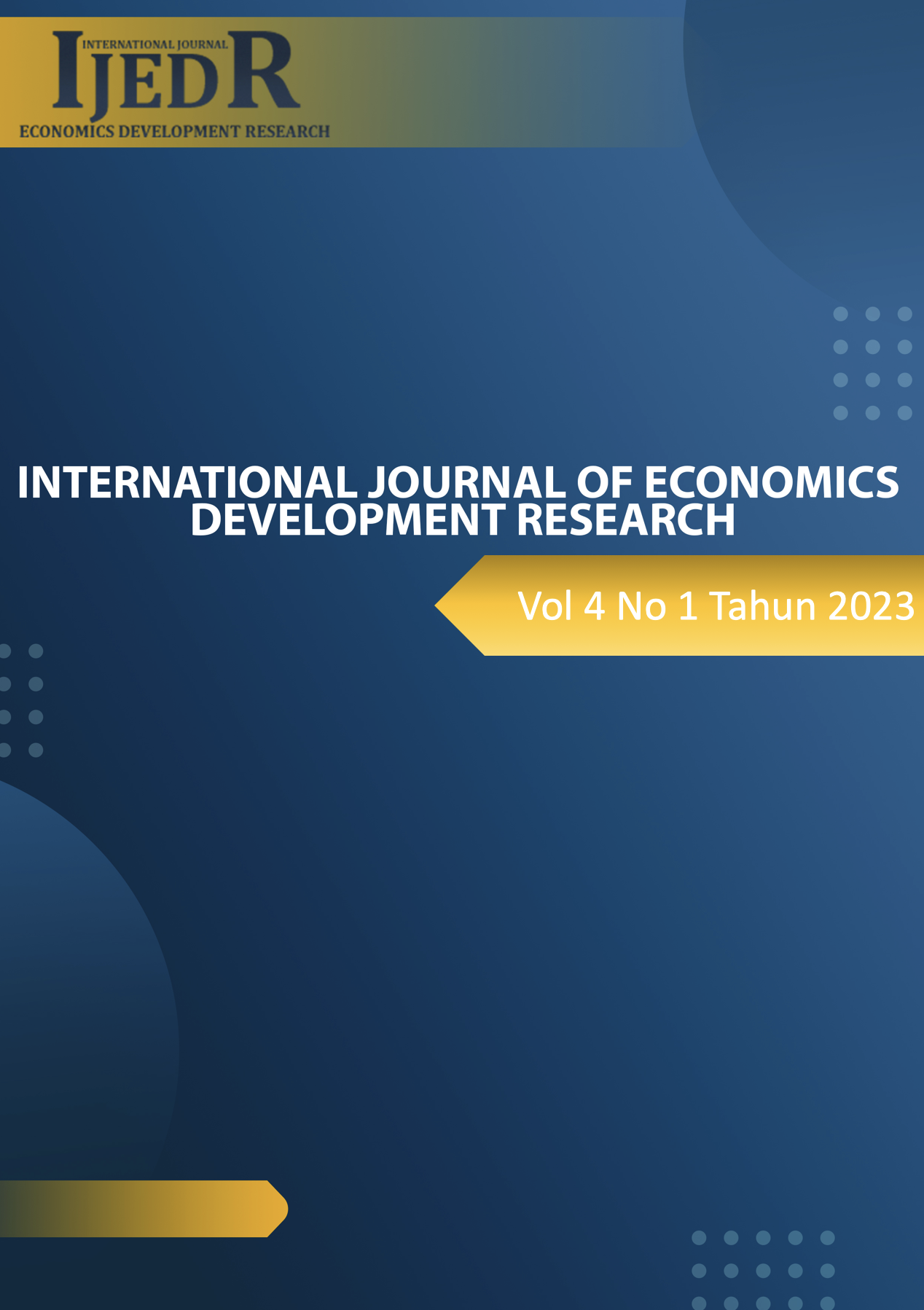The Effect of Market Segmentation and Customer Preference on Customer Satisfaction of Ice Cream Mixue in Yogyakarta
DOI:
https://doi.org/10.37385/ijedr.v4i2.2950Keywords:
Ice Cream Mixue, Customer Satisfaction, Customer Preferences, Market SegmentationAbstract
The things that are important and need to be considered in marketing the products to be sold are by analyzing market segmentation and understanding customer needs and wants. This is what Ice Cream Mixue does in Yogyakarta in formulating its marketing strategy in facing market share competition with its competitors. The purpose of this study was to analyze the effect of Market Segmentation and Customer Preferences on Customer Satisfaction of Ice Cream Mixue in Yogyakarta. Data analysis techniques using Partial Least Square (SEM-PLS). The sample in this study were 65 customers who were Ice Cream Mixue connoisseurs who had bought and consumed it regularly which were taken randomly for outlets in the city of Yogyakarta which were spread across 5 branches.The results showed that market segmentation and customer preferences had a positive and significant effect on customer satisfaction with an original sample value of 0.456; 0.417 and a p-value of 0.001; 0.002 with a standard error of 5%. These results indicate that if market segmentation is formed correctly and customer preferences are met, it can affect the high customer satisfaction at ice cream mixue outlets in Yogyakarta.
References
Ali, S. (2016). The Effect of Market Segmentation Strategy and Positioning on Customer and Its Impact on Customer Satisfaction on Sundanesse Restaurant in Bandung City. Journal of Marketing and Consumer Research, 21, 1-13.
Al Arif Nur Rianto. (2012). Basics of Islamic Bank Marketing. Bandung.
Alfabeta Arikunto Suharsimi. (2010). Research Procedure. Jakarta. Rineka Cipta.
Aprih Santoso and Sri Widowati, (2011). The Effect of Service Quality, Facilities and Location on Purchasing Decisions, Journal of Socio-Cultural Dynamics, 2, 179 - 190
Assauri, Sofjan. (2011). Marketing Management. Jakarta. PT Raja Grafindo Persada.
Chiu, K. K. S., Lin, R. J., Hsu, M. K., & Chen, S. C. (2011). Symbolic and functional brand effects for market segmentation. Australian Journal of Business and Management Research, 1(6), 75.
Darmadi Hamid. (2011). Education Research Methods. Bandung. Alfabeta
Ghozali, Imam and Hengky Latan. (2015). Concepts, Techniques, Applications Using Smart PLS 3.0 for Empirical Research. Semarang: BP UNDIP.
Sugiyono. (2011). Educational Research Methods. Bandung. Alfabeta
Sugiyono. (2015). Quantitative Qualitative and R&D Research Methods. Bandung. Alfabeta.
Sunyoto Danang. (2013). Basics of Marketing Management. Yogyakarta. CAPS.
Tjiptono Fandy. (2005). Service Marketing. Malang. Bayumedia Publishing,
Fandy. (2008). Marketing Strategy. Yogyakarta. CVAndi Offset.
Triayuni, L. G. N. P., Parining, N., & Wijayanti, P. U. (2020). The Effect of Marketing Mix on Consumer Decisions to Buy Green Products at Ubud Organic Market, Ubud District, Gianyar Regency. Journal of Agribusiness and Agritourism.
Umar Husain. (2005). Business Feasibility Study. Jakarta. PT. Gramedia Pustaka
Utama Utami Christina Whidya. (2006). Retail Management. Jakarta. Fourth Edition
Wardhani, Widya. (2015). The Influence of Consumer Perceptions and Preferences on Green Product Residential Purchasing Decisions. Journal of Management and Organization, 6(1) : 46-63.
Waskito, D., Ananto, M., & Reza, A. (2014). Consumer Perceptions of Organic Food in Yogyakarta. Pelita-Journal of Student Research UNY, 9(01).
Windani, I., & Awaliyah, K. S. (2020). Consumer Preferences for Organic Food in Indonesia. In National Seminar on Integrated Livestock Agriculture (Vol. 4, No. 03, pp. 622-633).
Yamit Zulian. (2005). Product and Service Quality Management. Yogyakarta. Ekonisia





